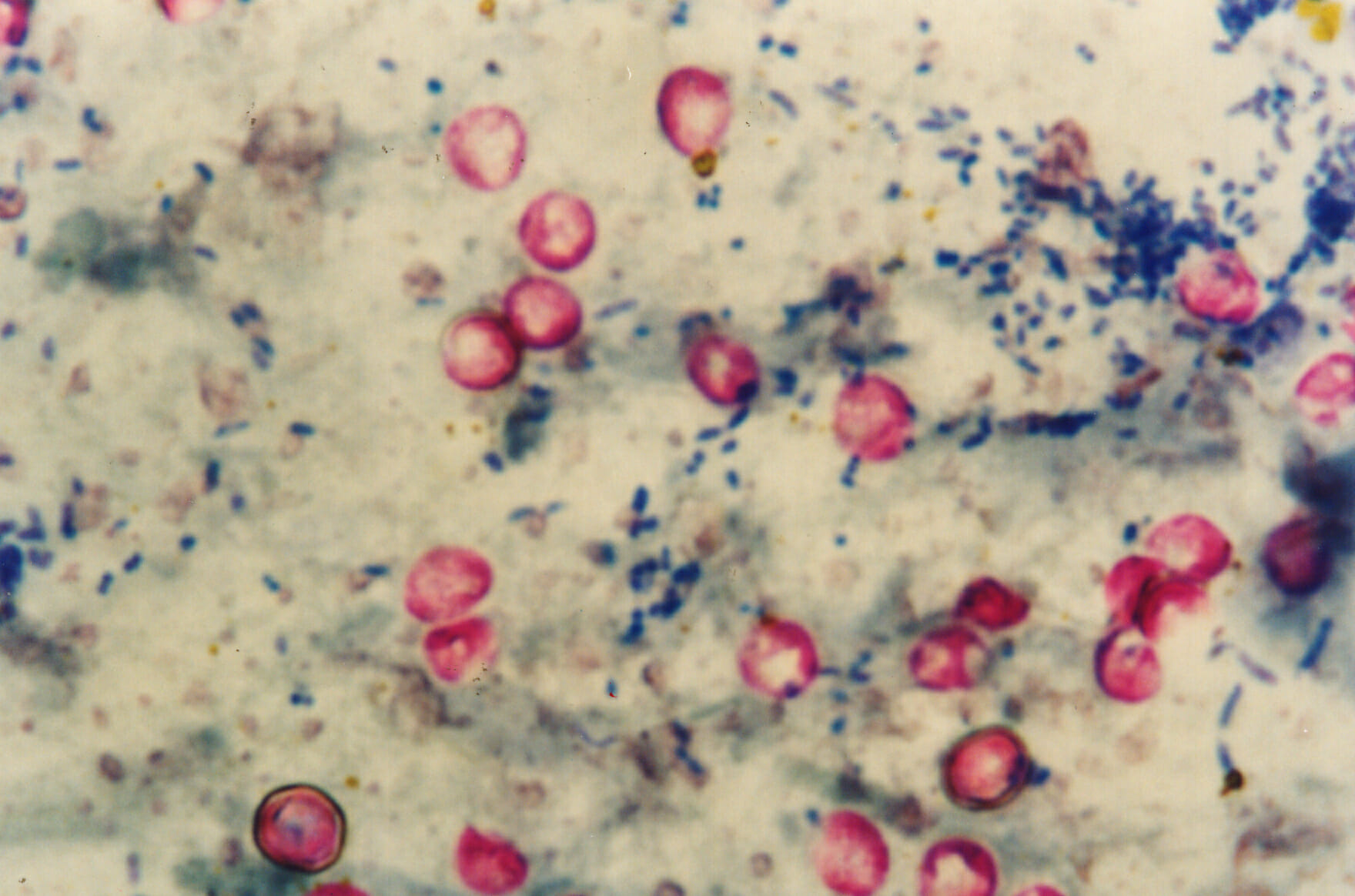Playlist
Show Playlist
Hide Playlist
Cryptosporidium – Protozoa (GI Infection)
-
03-53 Cryptosporidium.pdf
-
Download Lecture Overview
00:01 Cryptosporidium, a parasite. 00:03 Cryptosporidium come from the genus of protozoan parasites and you can see images of them on the scanning electromicroscopy vision in front of you and they stain in an acid-fast way. 00:15 The Cryptosporidia like most other parasite we’re talking about spread via fecal-oral spread of the oocytes in contaminated water. Incubation is five to ten days followed by the typical gastrointestinal infection. 00:32 Diagnosis of Cryptosporidium as mentioned before is via acid-fast stain to detect the oocytes in a contaminated stool specimen but far more frequently, one uses stool antigen which is both sensitive and specific. 00:47 The life cycle is important to understand because it informs how primary infection occurs and how disease occurs and so we will start with initial ingestion of the oocyst which opens up to release sporozoites which then attached to the brush border of the epithelial cells in the small intestine and it is that initial attachment which create first immune mediated damage to the microvilli. 01:17 Next there is an asexual reproduction step and this is where the trophozoite turns itself into a type 1 meront which then secondarily autoinfects or re-infects within the lumen of the gut new epithelial cells within the intestine. 01:37 The next step then is a sexual reproduction of the type 1 to type 2 meront which then eventually turns into an oocyst and can or could potentially passage out to the gut or autoinfect again in the intestine and in fact, the first form or the thin-walled oocyst is far more likely to remain within the intestinal lumen and start this whole process all over again, so one can see not just a single cycle of infection but a continued autoreinfection cycle which continues to precipitate further and further inflammatory reaction to the small intestinal epithelial cells. 02:22 Alternatively the cysts become far more thick-walled and can be passaged out to the stool where they can re-contaminate the water supply for the next waiting human victim. 02:32 Let's look now at the clinical disease associated with infection by cryptosporidia and that disease's name, intestinal cryptosporidiosis. 02:42 The way that it manifests really depends on how immunocompetent or immunodeficient the victim is. 02:49 Those who are immunocompetent may be asymptomatic or have at the most mild to moderate disease. 02:56 However, those who are immunodeficient can have progressive cycles of auto inoculation and severe disseminated disease which often is fatal. 03:06 Duration, for those who are immunocompetent, again, because they can limit the disease with immune response is at most two weeks. 03:14 Those who are immunodeficient may have a prolonged cycle - weeks to perhaps even months. 03:19 The clinical manifestations themselves in immunocompetent individuals: watery diarrhea, flu-like illness, again, not to minimize how that must feel but it is relatively mild overall. 03:34 Those who are immunodeficient have chronic, severe very watery diarrhea, and they lose both water and nutrients that way so they will have a wasting syndrome and encounter severe diarrheal dehydration. 03:47 And then for the treatment, in immunocompetent individuals supporting their nutritional and their water loses with rehydration and then the non-absorbable antibiotic called nitazoxanide, which has a very effective treatment for cryptosporidia. 04:04 For those who are immunodeficient we do all the things that we of course did with the immunocompetent individuals but in addition if they have HIV, AIDS, we try and maximize their treatment if they have other reason for their immunodeficiency we try and treat those so overall not necessarily a successful approach cryptosporidia in the immunodeficient person, it’s quite a severe and potentially fatal process. 04:29 In general, cryptosporidia coming from contaminated water again, just like we have mentioned with Giardia, it is a frequent contaminant of well water and therefore it could be found worldwide, absolutely something you’ll encounter frequently and for yourself I urge you, don’t drink the water.
About the Lecture
The lecture Cryptosporidium – Protozoa (GI Infection) by Sean Elliott, MD is from the course Parasites.
Included Quiz Questions
Which of the following is the primary site of adhesion of cryptosporidium?
- Small intestine
- Colon
- Stomach
- Rectum
- Esophagus
Which of the following staining techniques best detects cryptosporidium oocysts?
- Acid-fast stain
- Endospore stain
- Gram stain
- Differential stain
- Simple (routine) stain
If an IMMUNOCOMPETENT individual develops severe cryptosporidiosis, which of the following is considered the drug of choice?
- Nitazoxanide
- Metronidazole
- Tinidazole
- Azithromycin
- Paromomycin
Customer reviews
5,0 of 5 stars
| 5 Stars |
|
5 |
| 4 Stars |
|
0 |
| 3 Stars |
|
0 |
| 2 Stars |
|
0 |
| 1 Star |
|
0 |





